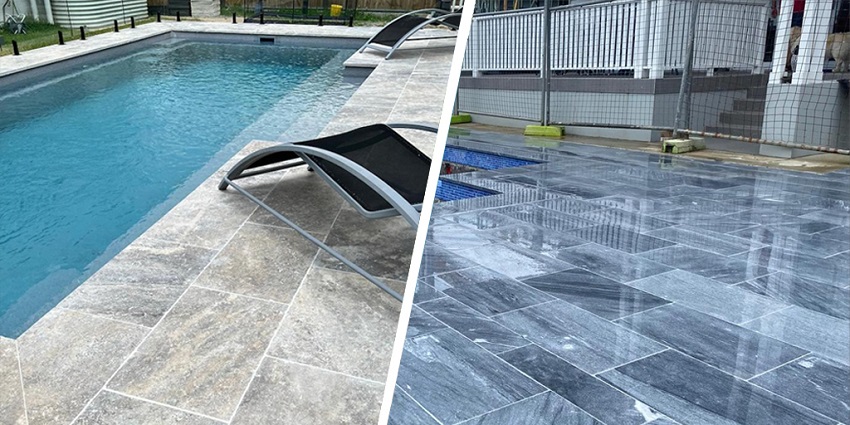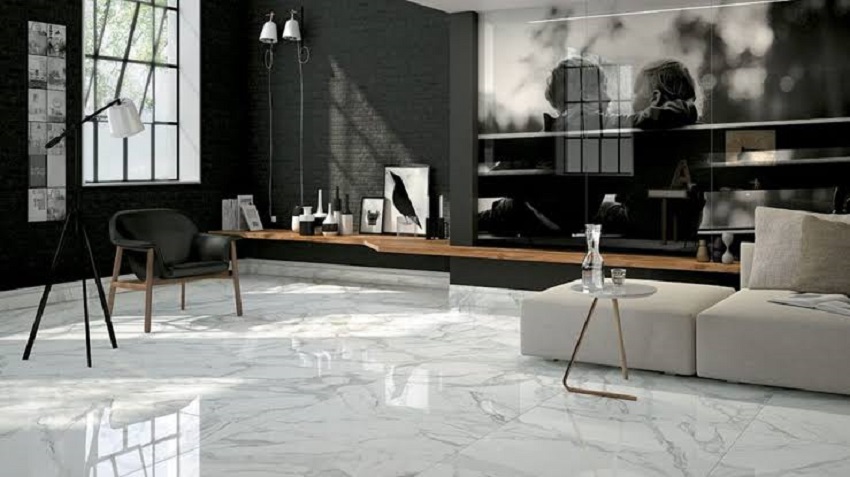
05 Aug Which is Better: Travertine or Marble?
When it comes to choosing the perfect natural stone for your interior design or architectural project, two popular options often come to mind: travertine and marble. Both of these stones possess unique characteristics that can enhance the beauty and elegance of any space. However, they also have their distinct features and considerations. In this article, we will delve into the differences between travertine and marble, highlighting their individual qualities and helping you make an informed decision. The content is brought to you by Decoracaos.com.
Understanding Travertine
Travertine is a sedimentary rock that forms over thousands of years from the precipitation of minerals in natural water sources. It is commonly found around mineral springs, geysers, and caves. The stone’s natural colors range from creamy whites to warm earth tones, giving it a timeless and natural appeal. Travertine is frequently used for travertine marble flooring, countertops, backsplashes, and wall cladding.
Pros of Travertine
- Unique Appearance: The distinct patterns and color variations make each piece of travertine a one-of-a-kind work of art.
- Durability: Travertine is relatively strong and can withstand heavy foot traffic when properly cared for.
- Heat Resistance: It is an excellent choice for areas with high heat exposure, like around fireplaces or outdoor patios.
- Affordability: Compared to marble, travertine is often more budget-friendly.
Cons of Travertine
- Porosity: Travertine is porous, making it susceptible to stains and water damage. Regular sealing is necessary to protect its surface.
- Scratch Sensitivity: Although durable, travertine can be scratched or etched by acidic substances.
- Limited Color Options: While the natural variations are beautiful, it may limit your color choices compared to other stones like marble.
Unraveling the Beauty of Marble
Marble is a metamorphic rock that forms when limestone is subjected to intense heat and pressure within the Earth’s crust. This natural process gives marble its signature veining patterns and an opulent appearance, which has been admired throughout history. Marble is widely used in sculpting, architecture, and as a symbol of luxury and sophistication in residential and commercial spaces.
Pros of Marble
- Elegant Aesthetics: Marble’s luxurious look and unique veining patterns add a touch of opulence to any space.
- Heat Resistance: Marble’s ability to remain cool to the touch makes it ideal for warmer climates.
- Increased Home Value: Installing marble surfaces can increase the overall value of a property.
Cons of Marble
- High Maintenance: Marble requires regular sealing and more delicate cleaning to prevent etching and staining.
- Durability Concerns: Marble is softer than travertine, making it more susceptible to scratches and chipping.
- Cost: Marble is generally more expensive than travertine, making it less budget-friendly.
Making the Right Choice
The decision between travertine and marble ultimately comes down to personal preferences, budget constraints, and the intended application. If you prioritize affordability, durability, and a variety of color options, travertine might be the better choice for you. On the other hand, if you seek a luxurious and timeless appearance with increased home value, and are willing to invest in regular maintenance, marble may be the right fit.
It’s crucial to consider the specific needs of your project, such as the location of the installation, foot traffic, and the overall design aesthetic you wish to achieve. Additionally, seeking advice from a professional interior designer or stone specialist can provide valuable insights and guidance in making your decision.
Conclusion
Both travertine and marble are exceptional natural stones that offer distinct characteristics and stunning aesthetics. Understanding their individual strengths and weaknesses can help you make a well-informed choice that aligns with your design vision and practical requirements.
When choosing between travertine and marble, consider factors such as budget, durability, maintenance, and design preferences. No matter which stone you choose, incorporating either travertine or marble into your interior or architectural project will undoubtedly elevate its beauty and make a lasting impression.
FAQs
Q1: Is travertine more affordable than marble?
Yes, in general, travertine tends to be more budget-friendly compared to marble.
Q2: Can marble be used for outdoor installations?
While marble can be used outdoors, it requires proper sealing and maintenance due to its susceptibility to weathering.
Q3: Is travertine suitable for high-traffic areas?
Yes, when properly cared for and sealed, travertine can withstand heavy foot traffic.
Q4: Can you combine travertine and marble in the same project?
Absolutely! Combining these two natural stones can create a stunning and unique design element.
Q5: How often should marble be sealed?
Marble should be sealed at least once every 6 to 12 months, depending on usage and wear.


Sorry, the comment form is closed at this time.